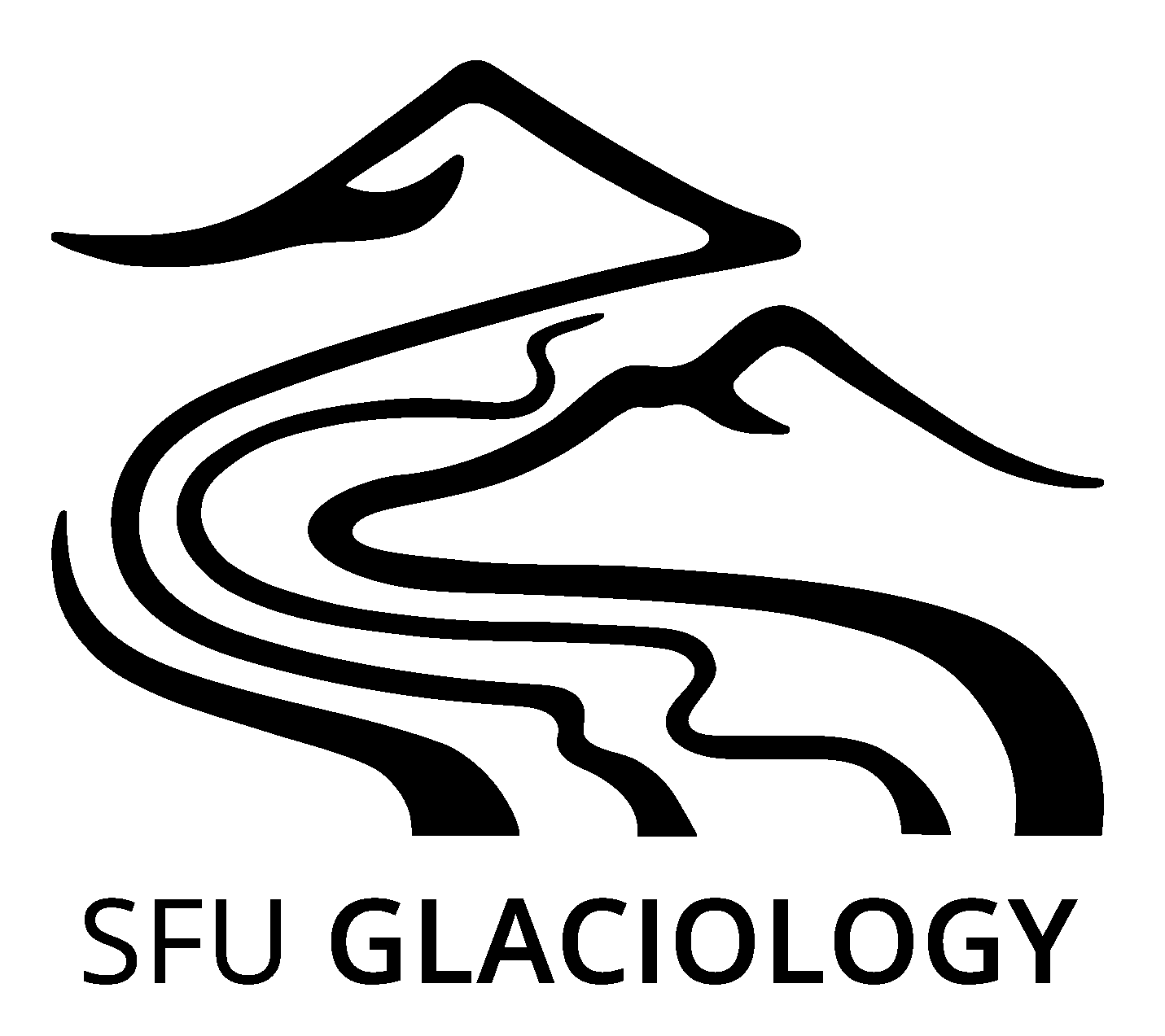The SFU Glaciology Group leads and collaborates on research to better understand various aspects of the terrestrial cryosphere. Below are some of our recent and ongoing research projects, along with related publications.
Arctic glacier mass balance and dynamics
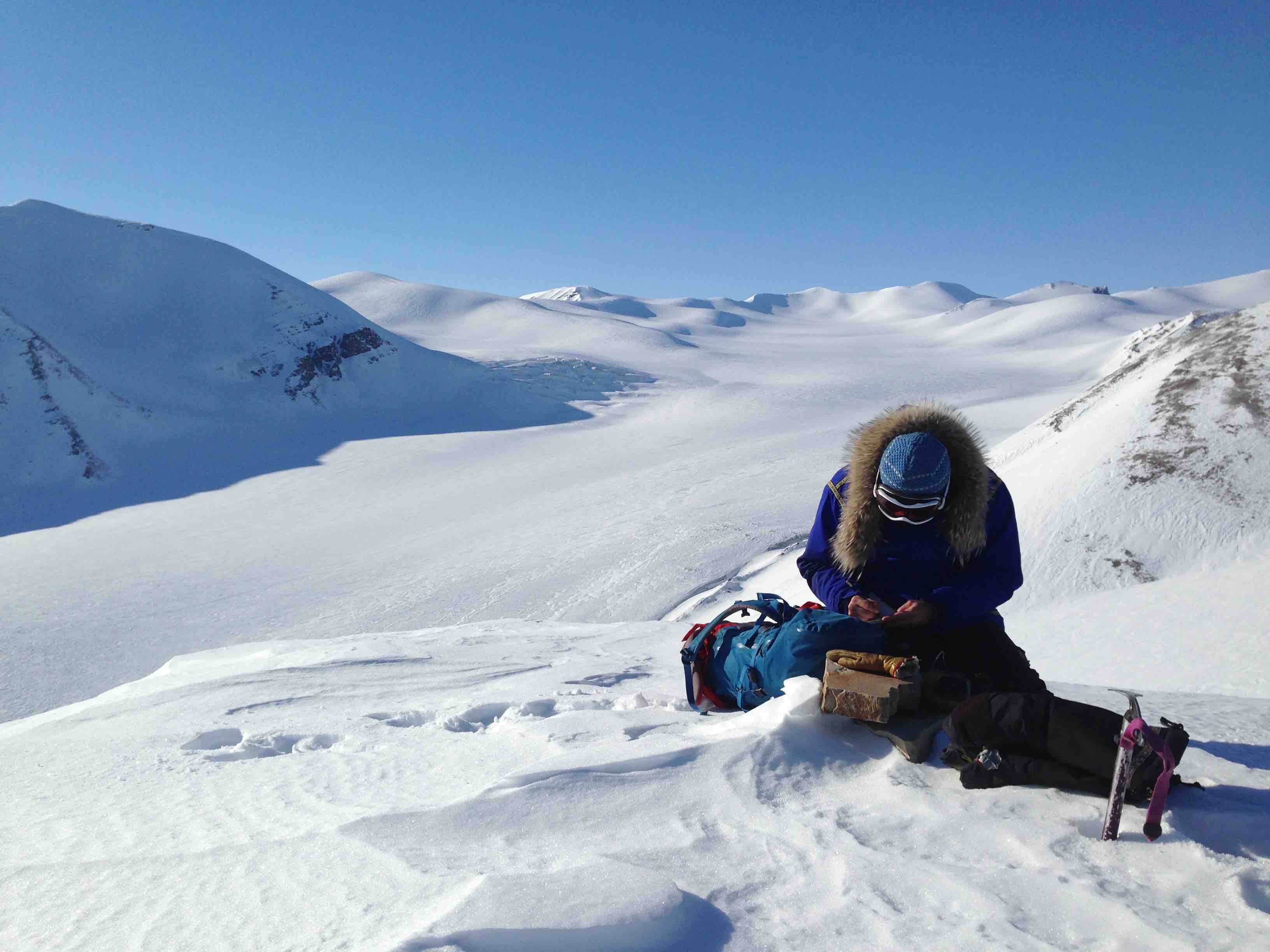 Glaciers in the Canadian Arctic are expected to lead glaciers and ice caps worldwide in 21st century contributions to sea level. We are studying the processes involved in Arctic glacier change, from surface mass balance to ice-ocean interactions to the evolving influence of basal processes.
Glaciers in the Canadian Arctic are expected to lead glaciers and ice caps worldwide in 21st century contributions to sea level. We are studying the processes involved in Arctic glacier change, from surface mass balance to ice-ocean interactions to the evolving influence of basal processes.
Related publications:
Mingo, L., G.E. Flowers, A.J. Crawford, D. Mueller, D.G. Bigelow. 2020. A stationary impulse-radar system for autonomous deployment in cold and temperate environments. Annals of Glaciology, doi:10.1017/aog.2020.2, 1-9.
Anderson, L.S., Á. Geirsdóttir, G.E. Flowers, A.D. Wickert, G. Aðalgeirsdóttir, Th. Thorsteinsson. 2019. Controls on the lifespans of Icelandic ice caps, Earth and Planetary Science Letters, 527, doi.org/10.1016/j.epsl.2019.115780, 115780.
Anderson, L.S., G.E. Flowers, A.H. Jarosch, G. Aðalgeirsdóttir, Á. Geirsdóttir, G.H. Miller, D.J. Harning, Th. Thorsteinsson, E. Magnússon, F. Pálsson, T. Jóhannesson. 2018. Holocene glacier and climate variations in Vestfirðir, Iceland, from the modeling of Drangajökull ice cap, Quaternary Science Reviews, 190, doi.org/10.1016/j.quascirev.2018.04.024, 39-56.
Pimentel, S., G.E. Flowers, M.J. Sharp, B. Danielson, L. Copland, W. Van Wychen, A. Duncan, J.L. Kavanaugh. 2017. Modelling seasonal dynamics of a major marine-terminating Arctic glacier. Annals of Glaciology, 58(74), doi:10.1017/aog.2017.23, 118-130.
Gilbert, A., G.E. Flowers, G.H. Miller, K. Refsnider, N.E. Young, V. Radic. 2017. The projected demise of Barnes Ice Cap: evidence of an unusually warm 21st century Arctic. Geophysical Research Letters, 44, doi:10.1002/2016GL072394, 2810-2816.
Gilbert, A., Flowers, G.E., Miller, G.H., Rabus, B.T., Van Wychen, W., Gardner, A.S., Copland, L. 2016. Sensitivity of Barnes Ice Cap, Baffin Island, Canada, to climate state and internal dynamics. Journal of Geophysical Research - Earth Surface, 121, doi:10.1002/2016JF003839, 1516-1539.
Joughin, I., S.B. Das, G.E. Flowers, M.D. Behn, R.B. Alley, M.A. King, B.E. Smith, J. Bamber, M.R. van den Broeke, J.H. van Angelen. 2013. Influence of supraglacial lakes and ice-sheet geometry on seasonal ice-flow variability. The Cryosphere, 7, doi:10.5194/tc-7-1185-2013, 1185-1192.
Optimal design and uncertainty quantification in measuring and modelling glacier mass balance
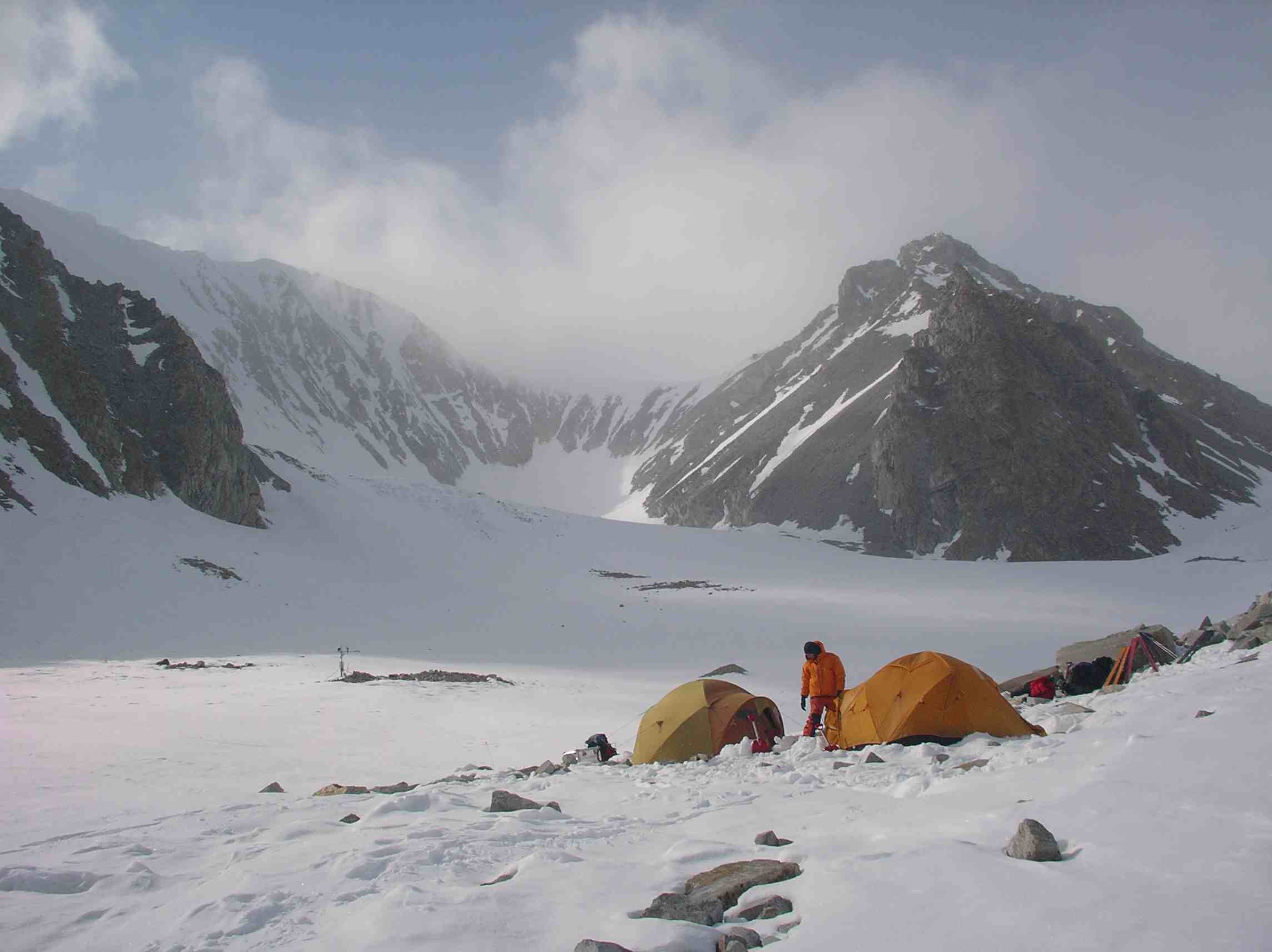 In collaboration with colleagues from SFU Statistics, we are applying principles of experimental design to optimize the sampling schemes used to measure in-situ glacier mass balance and to rigourously quantify related uncertainties. These techniques are being applied to real data from our study sites in the St. Elias Mountains of Yukon.
In collaboration with colleagues from SFU Statistics, we are applying principles of experimental design to optimize the sampling schemes used to measure in-situ glacier mass balance and to rigourously quantify related uncertainties. These techniques are being applied to real data from our study sites in the St. Elias Mountains of Yukon.
Related publications:
Pulwicki, A., G.E. Flowers, V. Radic, D. Bingham. 2019. Pursuit of optimal design for winter-balance surveys of valley-glacier ablation areas, Frontiers in Earth Science, doi.org/10.3389/feart.2019.00199, 7, 199.
Pulwicki, A., G.E. Flowers, V. Radic, D. Bingham. 2018. Estimating winter balance and its uncertainty from direct measurements of snow depth and density on alpine glaciers, Journal of Glaciology, doi:10.1017/jog.2018.68.
Pratola, M.T., O. Harari, D. Bingham, J. Parkhouse, G.E. Flowers. 2017. Design on non-convex regions: optimal experiments for spatial process prediction, Technometrics, 59(1), doi:10.1080/00401706.2015.1115674, 36-47.
Surjanovic, S. 2016. Using computer model uncertainty to inform the design of physical experiments: An application in glaciology. Master's thesis, Simon Fraser University.
Initiation and dynamics of glacier outburst floods
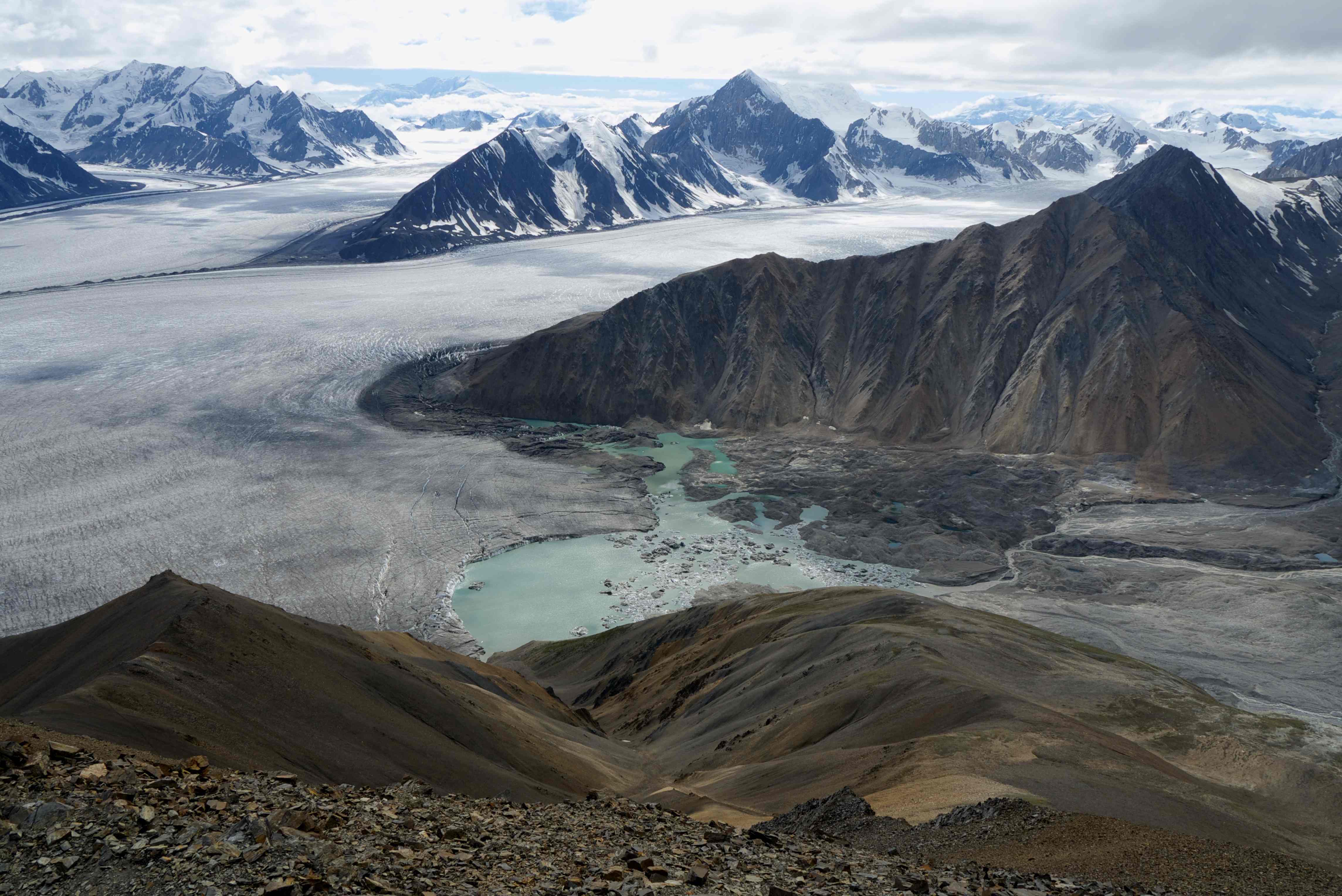 Outburst floods from ice-dammed lakes represent one of the most important glaciological hazards. We are using a suite of ground-based geophysical measurements, including a novel stationary ice-penetrating radar system, to understand the annual outburst flood cycle of a lake dammed by the Kaskawulsh Glacier. We are collaborating with colleagues from UBC-EOAS as well as others to understand the hydrology of the surrounding area.
Outburst floods from ice-dammed lakes represent one of the most important glaciological hazards. We are using a suite of ground-based geophysical measurements, including a novel stationary ice-penetrating radar system, to understand the annual outburst flood cycle of a lake dammed by the Kaskawulsh Glacier. We are collaborating with colleagues from UBC-EOAS as well as others to understand the hydrology of the surrounding area.
Related publications:
Bigelow, D.G., G.E. Flowers, C.G. Schoof, L.D.B. Mingo, E.M. Young, B.C. Connal. 2020. The Role of Englacial Hydrology in the Filling and Drainage of an Ice-Dammed Lake, Kaskawulsh Glacier, Yukon, Canada, Journal of Geophysical Research, doi:10.1029/2019JF005110, 125, 1-21.
Mingo, L., G.E. Flowers, A.J. Crawford, D. Mueller, D.G. Bigelow. 2020. A stationary impulse-radar system for autonomous deployment in cold and temperate environments. Annals of Glaciology, doi:10.1017/aog.2020.2, 1-9.
Aso, N., V. Tsai, C. Schoof, G. Flowers, A. Whiteford, C. Rada. 2017. Seismologically observed spatio-temporal drainage activity at moulins. Journal of Geophysical Research - Earth Surface, 122, doi:10.1002/2017JB014578, 9095-9108.
Pimentel, S. and G.E. Flowers. 2011. A numerical study of hydrologically driven glacier dynamics and subglacial flooding. Proceedings of the Royal Society A., 467, 537-558, doi:10.1098/rspa.2010.0211.
Flowers, G.E., H. Björnsson, F. Pálsson and G.K.C. Clarke. 2004. A coupled sheet-conduit mechanism for jökulhlaup propagation. Geophysical Research Letters, 31 L05401, doi:10.1029/2003GL019088.
Glacier and ice-sheet hydrology
 Basal hydrology plays a fundamental role in glacier and ice-sheet dynamics. We are contributing to the growing need for numerical models of glacier drainage that capture process-scale phenomena but can ultimately be adapted to large-scale ice-flow models.
Basal hydrology plays a fundamental role in glacier and ice-sheet dynamics. We are contributing to the growing need for numerical models of glacier drainage that capture process-scale phenomena but can ultimately be adapted to large-scale ice-flow models.
Related publications:
Bigelow, D.G., G.E. Flowers, C.G. Schoof, L.D.B. Mingo, E.M. Young, B.C. Connal. 2020. The Role of Englacial Hydrology in the Filling and Drainage of an Ice-Dammed Lake, Kaskawulsh Glacier, Yukon, Canada, Journal of Geophysical Research, doi:10.1029/2019JF005110, 125, 1-21.
Flowers, G.E. 2018. Hydrology and the future of the Greenland Ice Sheet (Solicited Comment), Nature Communications, 9, 2729, doi:10.1038/s41467-018-05002-0.
King, L., Hassan, M., Yang, K., Flowers, G. 2016. Flow routing for delineating supraglacial meltwater channel networks. Remote Sensing, 8(12), doi:10.3390/rs8120988, 988.
Flowers, G.E. 2015. Modelling water flow under glaciers and ice sheets. Proceedings of the Royal Society A 471: 20140907, doi:10.1098/rspa.2014.0907.
Schoof, C.G., C.A. Rada, N.J. Wilson, G.E. Flowers, M. Haseloff. 2014. Oscillatory subglacial drainage in the absence of surface melt. The Cryosphere, 8, do:10.5194/tc-8-959-2014, 959-976.
Werder, M.A., I. Hewitt, C.G. Schoof, G.E. Flowers. 2013. Modeling channelized and distributed subglacial drainage in two dimensions. Journal of Geophysical Research - Earth Surface, 118, doi:10.1002/jgrf.20146, 2140-2158.
Pimentel, S. and G.E. Flowers. 2011. A numerical study of hydrologically driven glacier dynamics and subglacial flooding. Proceedings of the Royal Society A., 467, doi:10.1098/rspa.2010.0211, 537-558.
Pimentel, S., G.E. Flowers and C.G. Schoof. 2010. A hydrologically coupled higher-order flow-band model of ice dynamics with a Coulomb friction sliding law. Journal of Geophysical Research 115, doi:10.1029/2009JF001621, F04023.
Glacier surging and basal processes
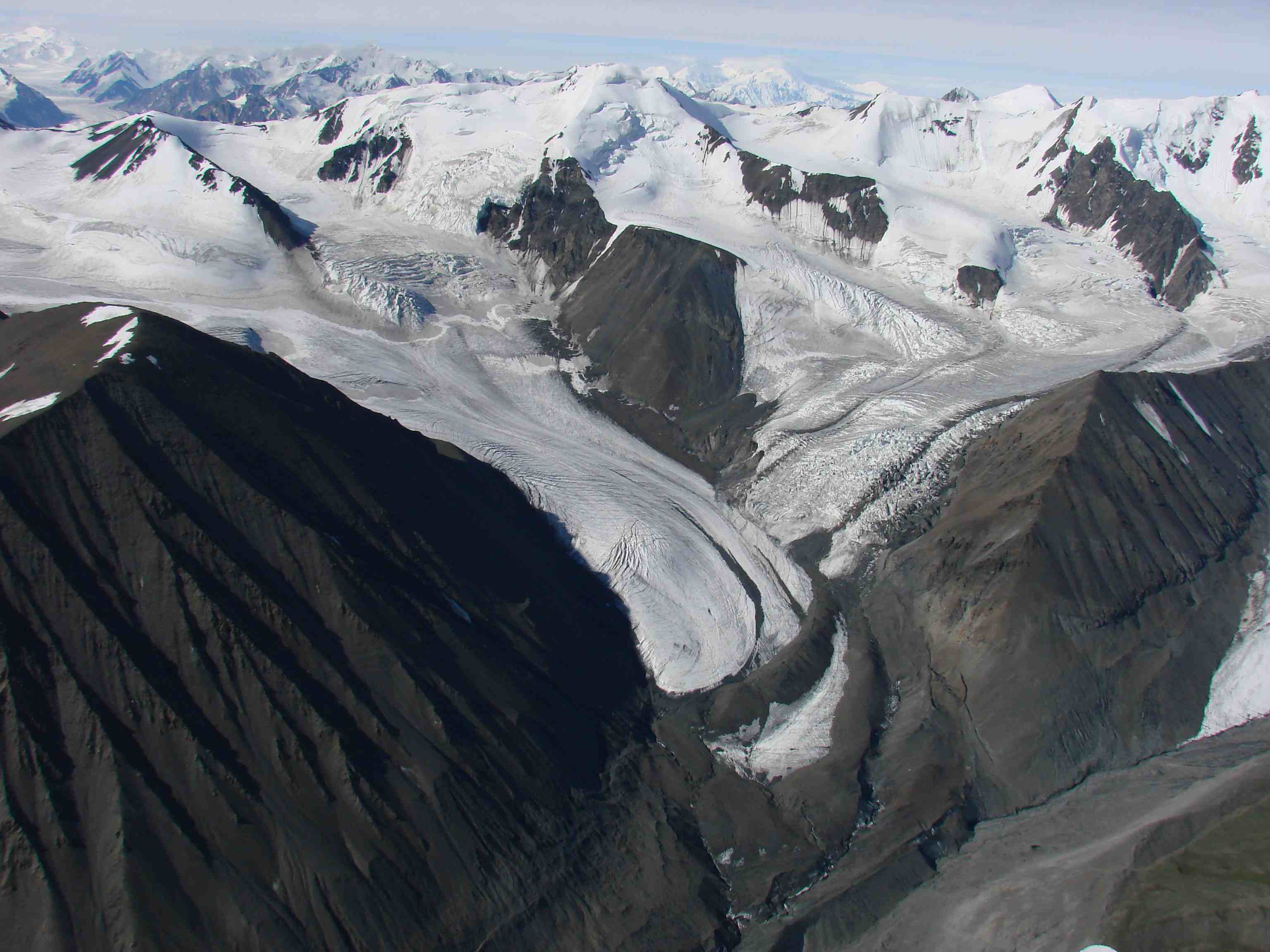 Glacier surging represents an unforced mode of fast-flow whose fundamental underpinnings are still not well understood. We are investigating the geologic controls on glacier dynamics and the basal processes that give rise to fast flow.
Glacier surging represents an unforced mode of fast-flow whose fundamental underpinnings are still not well understood. We are investigating the geologic controls on glacier dynamics and the basal processes that give rise to fast flow.
Related publications:
Crompton, J.W., G.E. Flowers, B. Dyck. 2020. Characterization of glacial silt and clay using automated mineralogy. Annals of Glaciology, 60(80), doi:10.1017/aog.2019.45, 49-65.
Crompton, J.W., G.E. Flowers, D. Stead. 2018. Bedrock fracture characteristics as a possible control on the distribution of surge-type glaciers, Journal of Geophysical Research - Earth Surface, 123, doi.org/10.1002/2017JF004505, 853-873.
Flowers, G.E., A.H. Jarosch, P.T.A.P. Belliveau, L.A. Fuhrman. 2016. Short-term velocity variations and sliding sensitivity of a slowly surging glacier. Annals of Glaciology, 57(72), doi:10.1017/aog.2016.7, 71-83.
Crompton, J.W. and G.E. Flowers. 2016. Correlations of suspended sediment size with bedrock lithology and glacier dynamics. Annals of Glaciology, 57(72), doi:10.1017/aog.2016.6, 142-150.
Crompton, J.W., G.E. Flowers, D. Kirste, B. Hagedorn, M.J. Sharp, 2015. Clay mineral precipitation and low silica in glacier meltwaters explored through reaction path modelling. Journal of Glaciology, 61(230), doi:10.3189/2015JoG15J051, 1061-1078.
Wilson, N.J., G.E. Flowers, L. Mingo. 2014. Mapping and interpretation of bed reflection power from a surge-type polythermal glacier. Annals of Glaciology, 55(67), doi:10.3189/2014AoG67A101, 1-8.
Flowers, G.E., N. Roux, S. Pimentel, C. Schoof. 2011. Present dynamics and future prognosis of a slowly surging glacier. The Cryosphere, 5, doi:10.5194/tc-5-299-2011, 299-313.
De Paoli, L. and G.E. Flowers. 2009. Dynamics of a small surge-type glacier investigated using one-dimensional geophysical inversion. Journal of Glaciology, 55(194), doi:10.3189/002214309790794850, 1101-1112.
Glacial erosion
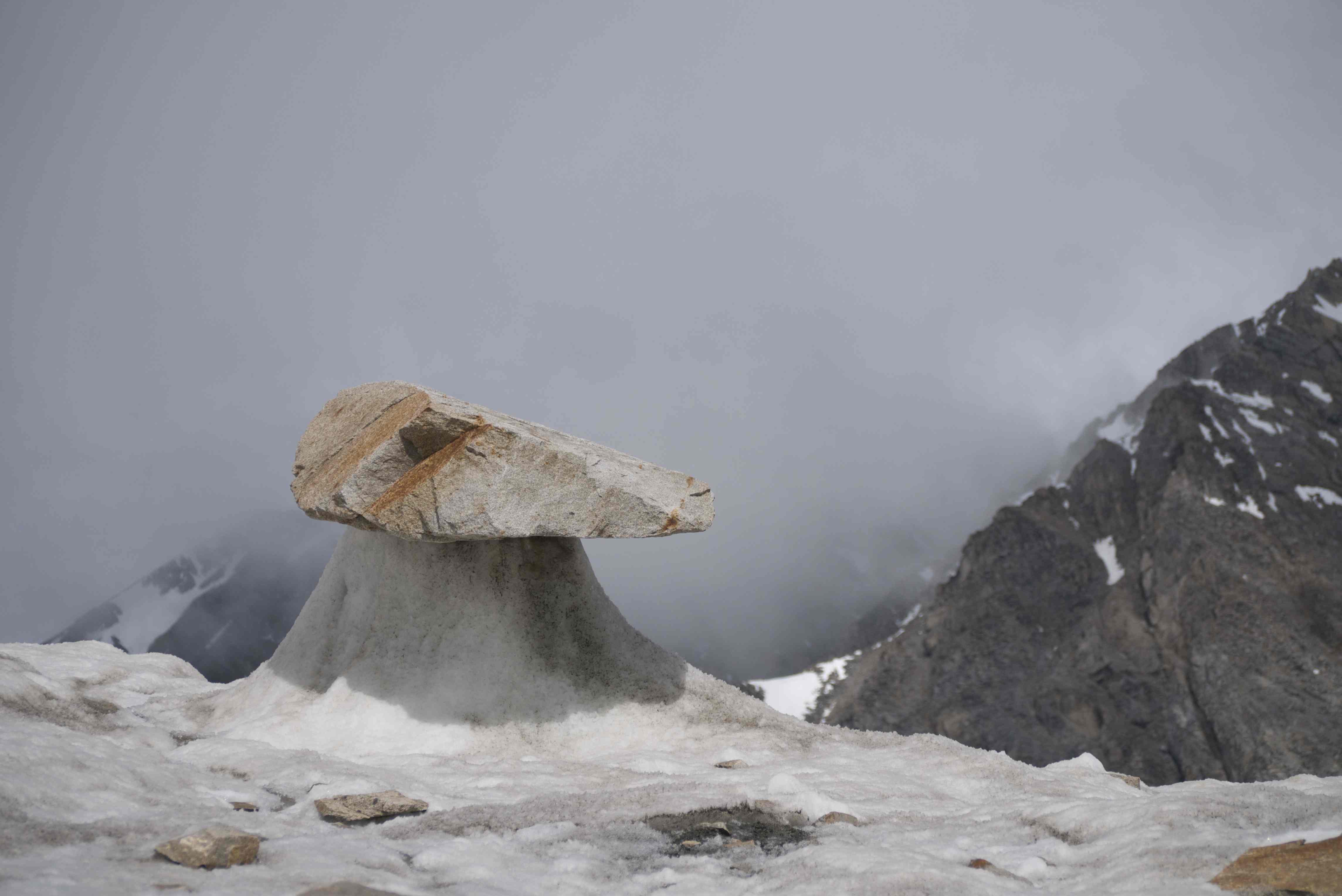 Glaciers do work on the landscape with tools embedded in basal ice and sediment conveyed in subglacial water. We are developing new physically-based models to describe glacial erosion processes that help explain the conditions required to create the landforms glaciers leave behind.
Glaciers do work on the landscape with tools embedded in basal ice and sediment conveyed in subglacial water. We are developing new physically-based models to describe glacial erosion processes that help explain the conditions required to create the landforms glaciers leave behind.
Related publications:
Crompton, J.W., G.E. Flowers, B. Dyck. 2020. Characterization of glacial silt and clay using automated mineralogy. Annals of Glaciology, 60(80), doi:10.1017/aog.2019.45, 49-65.
Beaud, F., G.E. Flowers, J.G. Venditti. 2018. Modeling sediment transport in ice-walled subglacial channels and its implications for esker formation and proglacial sediment yields. Journal of Geophysical Research - Earth Surface, 123, doi.org/10.1029/2018JF004779, 3206-3227.
Beaud, F., J.G. Venditti, G.E. Flowers, M. Koppes. 2018. Excavation of subglacial bedrock channels by seasonal meltwater flow. Earth Surface Processes and Landforms, 43, doi: 10.1002/esp.4367, 1960-1972.
Beaud, F.B., G.E. Flowers, J.G Venditti. 2016. Efficacy of bedrock erosion by subglacial water flow. Earth Surface Dynamics, 4, doi:10.5194/esurf-4-125-2016, 125-145.
Beaud, F.B., G.E. Flowers, S. Pimentel. 2014. Seasonal-scale abrasion and quarrying patterns from a two-dimensional ice-flow model coupled to distributed and channelized subglacial drainage. Geomorphology, 219, doi:10.1016/j.geomorph.2014.04.036, 176-191.
Glacier thermal structure and evolution
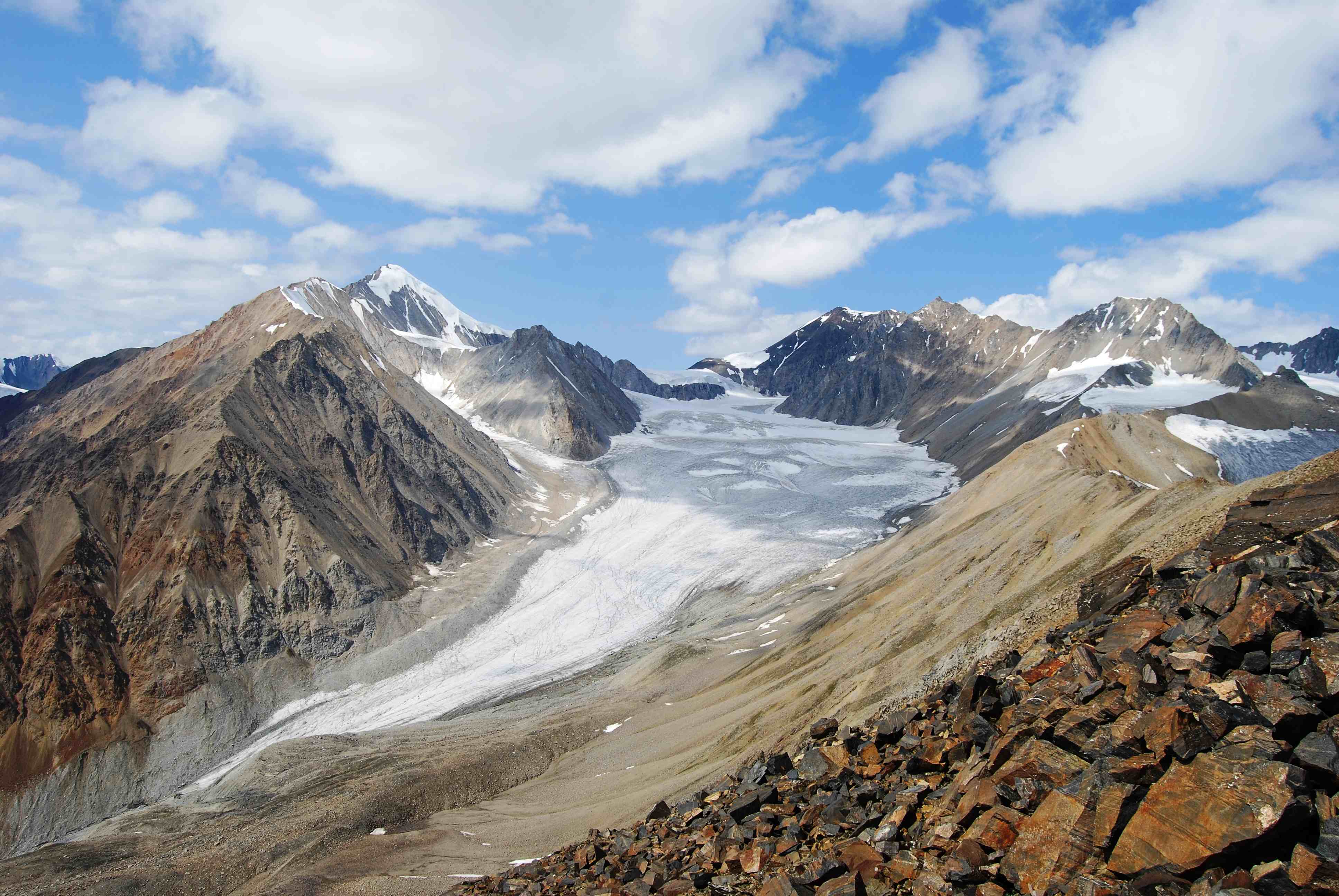 Glaciers respond to climate by adjusting their geometry, dynamics and thermal architecture. We are using ice-penetrating radar and borehole temperature measurements to map the structure of polythermal glaciers. Thermo-mechanical models enable us to attribute the mapped structures to specific processes and project the evolution of glacier thermal structure into the future.
Glaciers respond to climate by adjusting their geometry, dynamics and thermal architecture. We are using ice-penetrating radar and borehole temperature measurements to map the structure of polythermal glaciers. Thermo-mechanical models enable us to attribute the mapped structures to specific processes and project the evolution of glacier thermal structure into the future.
Related publications:
Gilbert, A., Flowers, G.E., Miller, G.H., Rabus, B.T., Van Wychen, W., Gardner, A.S., Copland, L. 2016. Sensitivity of Barnes Ice Cap, Baffin Island, Canada, to climate state and internal dynamics. Journal of Geophysical Research - Earth Surface, 121, doi:10.1002/2016JF003839, 1516-1539.
Wilson, N.J., G.E. Flowers, L. Mingo. 2014. Mapping and interpretation of bed reflection power from a surge-type polythermal glacier. Annals of Glaciology, 55(67), doi:10.3189/2014AoG67A101, 1-8.
Wilson, N.J., G.E. Flowers, L. Mingo. 2013. Comparison of thermal structure and evolution between neighboring subarctic glaciers. Journal of Geophysical Research - Earth Surface, 118, doi:10.1002/jgrf.20096, 1443-1459.
Wilson, N.J. and G.E. Flowers. 2013. Environmental controls on the thermal structure of alpine glaciers. The Cryosphere, 7, doi:10.5194/tc-7-167-2013, 167-182.
Mingo, L. and G.E. Flowers. 2010. Instruments and Methods: An integrated lightweight ice-penetrating radar system. Journal of Glaciology, 56(198), do:10.3189/002214310793146179, 709-714.
Glacier-climate interactions
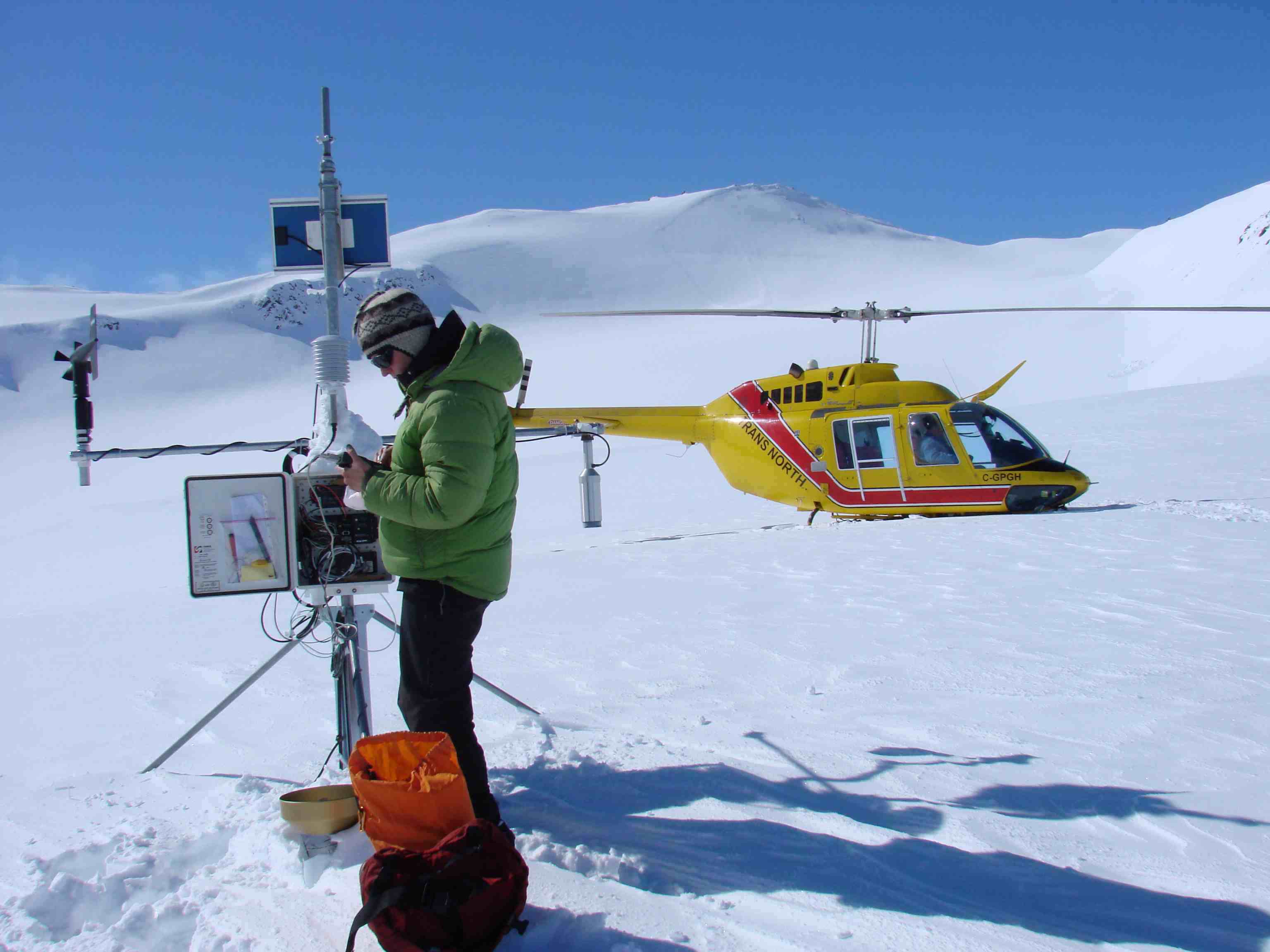 The fate of many glaciers and ice caps is tied to processes occurring at the ice - atmosphere interface. We use field data combined with models of varying complexity to understand surface mass- and energy exchange, with an emphasis on model fidelity to observations and transferability in space and time.
The fate of many glaciers and ice caps is tied to processes occurring at the ice - atmosphere interface. We use field data combined with models of varying complexity to understand surface mass- and energy exchange, with an emphasis on model fidelity to observations and transferability in space and time.
Related publications:
Young, E.M., G.E. Flowers, E. Berthier & R. Latto. 2020. An imbalancing act: The delayed dynamic response of the Kaskawulsh Glacier to sustained mass loss, Journal of Glaciology, doi:10.1017/jog.2020.107.
Anderson, L.S., Á. Geirsdóttir, G.E. Flowers, A.D. Wickert, G. Aðalgeirsdóttir, Th. Thorsteinsson. 2019. Controls on the lifespans of Icelandic ice caps, Earth and Planetary Science Letters, 527, doi.org/10.1016/j.epsl.2019.115780, 115780.
Pulwicki, A., G.E. Flowers, V. Radic, D. Bingham. 2019. Pursuit of optimal design for winter-balance surveys of valley-glacier ablation areas, Frontiers in Earth Science, doi.org/10.3389/feart.2019.00199, 7, 199.
Pulwicki, A., G.E. Flowers, V. Radic, D. Bingham. 2018. Estimating winter balance and its uncertainty from direct measurements of snow depth and density on alpine glaciers, Journal of Glaciology, doi:10.1017/jog.2018.68.
Wheler, B.A., MacDougall, A.H., Flowers, G.E., Petersen, E.I., Whitfield, P.H., Kohfeld, K.E. 2014. Effects of temperature forcing provenance and lapse rate on the performance of an empirical glacier-melt model. Arctic, Antarctic, and Alpine Research, 46(2), do:10.1657/1938-4246-46.2.379, 379-393.
Williamson, S.N., D.S. Hik, J.A. Gamon, J.L. Kavanaugh, G.E. Flowers. 2014. Estimating mean surface air temperature from MODIS Land Surface Temperature observations in a sub-Arctic alpine environment. Remote Sensing, 6(2), 946-963, doi:10.3390/rs6020946.
MacDougall, A.H., B.A. Wheler and G.E. Flowers. 2011. A preliminary assessment of glacier melt-model parameter sensitivity and transferability in a dry subarctic environment. The Cryosphere, 5, doi: 10.5194/tc-5-1011-2011, 1011-1028.
MacDougall, A.H. and G.E. Flowers. 2011. Spatial and temporal transferability of a distributed energy-balance glacier melt-model. Journal of Climate, 24(5), doi:10.1175/2010JCLI3821.1, 1480-1498.
Wheler, B.A. and G.E. Flowers. 2011. Glacier subsurface heat-flux characterizations for energy balance modelling in the Donjek Range, southwest Yukon Territory, Canada. Journal of Glaciology 57(201), do:10.3189/002214311795306709, 121-133.

